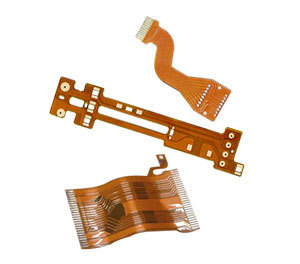
The price of flexible PCBs (Printed Circuit Boards) can vary significantly based on a variety of factors. When determining the cost of flexible PCBs, consider the following key factors that can influence the pricing:
- Complexity of Design: The complexity of the PCB design, including the number of layers, the density of components, and the intricacy of the routing, can greatly impact the cost. More complex designs may require advanced manufacturing techniques and additional processing steps, which can increase the price.
- Materials: The choice of materials for flexible PCBs plays a crucial role in pricing. High-quality, specialized materials like polyimide or liquid crystal polymer (LCP) tend to be more expensive than standard FR-4 materials. The type of copper used for the conductive traces also affects the cost.
- Layer Count: The number of layers in the flexible PCB has a direct impact on the cost. Multi-layer flexible PCBs are more expensive than single-layer ones because they involve more complex fabrication processes.
- Size and Dimensions: The size and dimensions of the flexible PCB can significantly influence the cost. Larger PCBs typically require more material and manufacturing effort, which results in higher costs.
- Quantity: The volume of flexible PCBs ordered can affect pricing. Larger quantities often lead to reduced unit costs, as manufacturers can achieve economies of scale in production.
- Tolerances and Specifications: Tighter tolerances and specific requirements for the PCB, such as fine-pitch components or controlled impedance, can increase costs due to the need for more precise manufacturing processes and testing.
- Surface Finish: The choice of surface finish, such as gold plating or immersion silver, can affect pricing. Some surface finishes are more expensive than others.
- Lead Time: Urgent or expedited orders can come with higher costs because they may require changes in the production schedule or extra resources to meet tight deadlines.
- Additional Services: Any additional services, such as assembly, component placement, or testing, will add to the overall cost. Some PCB manufacturers offer turnkey services, which include assembly, while others do not.
- Supplier and Location: The choice of PCB manufacturer or supplier also affects pricing. Different manufacturers have varying cost structures, and geographical location can impact labor and material costs.
- Quality and Certification: PCBs designed for applications that require specific quality standards or certifications, such as ISO or IPC standards, may come with additional quality control processes and associated costs.
- Customization: Customized or specialty features like blind vias, buried vias, controlled impedance traces, or unique shapes can add to the cost of flexible PCBs.
- Specialized Requirements: If the flexible PCB needs to meet particular industry or environmental standards, such as those for medical, aerospace, or automotive applications, additional testing and compliance efforts may be necessary, increasing costs.
It’s essential to consider these factors when planning and budgeting for flexible PCBs to ensure that the final product meets your specific requirements while staying within your budget. Additionally, obtaining quotes from multiple PCB manufacturers and suppliers can help you compare costs and choose the most cost-effective option for your project.
Through the above discussion, it is not difficult to see that the diversity of FPC price has its inherent inevitable factors. I can only provide a rough price range for reference. The specific price shall be subject to the actual price.

